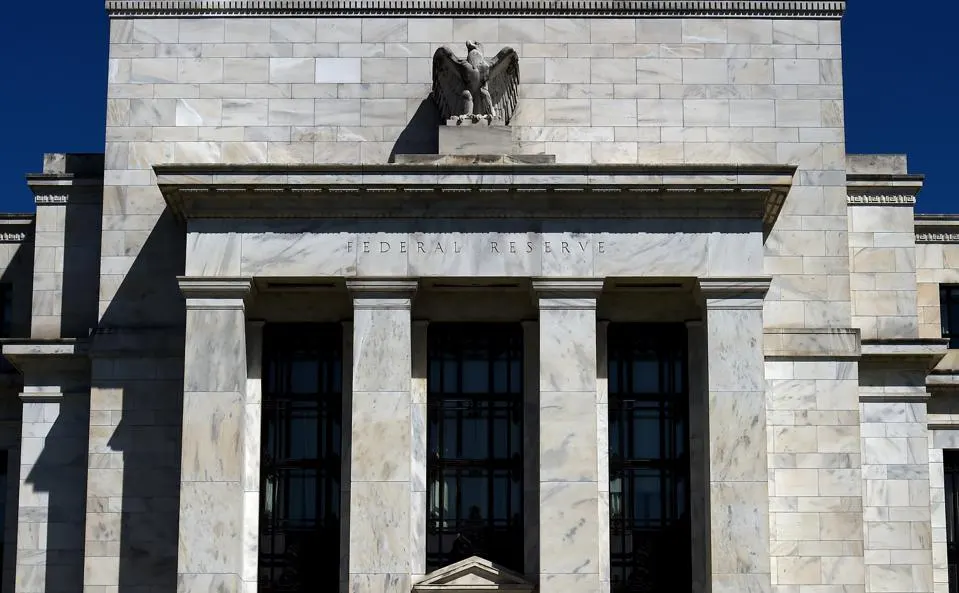Decision of FOMC
On Wednesday, the Federal Open Market Committee, or FOMC, decided not to raise the federal funds rate, as had been widely expected. Rather, it has maintained the present target range of 5.25% to 5.50%. Furthermore, the updated FOMC dot-plot predictions show that only one interest rate drop is expected this year.
The Federal Reserve has not raised or lowered interest rates since July 2023, but it appears increasingly probable that it will shift to rate cuts before the end of 2024.
This month, the Fed will also begin reducing its monthly runoff of Treasury securities and agency mortgage-backed securities, or MBS, with a maximum runoff of $25 billion in Treasury securities and $35 billion in MBS per month going ahead.
A solid labor market, resilient U.S. consumers, and a tight housing market slowed the Federal Reserve’s progress on inflation in the first half of 2023. Despite a favorable inflation reading earlier in the day, the FOMC stated that more data in the coming months will be required to show that inflation is on track to meet its 2.0% target.
Economists and investors expect numerous interest rate decreases in the second half of 2024, but Federal Reserve officials have frequently advised against decreasing rates too soon, risking a return in inflation.
Related: Current Mortgage Refinance Rates July 2024
The Inflation Tightrope
The Federal Reserve is aiming to reduce inflation by raising interest rates without sending the US economy into a recession. However, achieving a “soft landing” for the economy may be difficult because rising interest rates raise borrowing costs for both businesses and consumers, limiting economic activity.
On Wednesday morning, the Labor Department revealed that the consumer price index, or CPI, increased 3.3% year on year in May, down from 3.4% in April and a 40-year peak of 9.1% in June 2022.
In late May, the Commerce Department reported that the core personal consumption expenditures, or PCE, price index increased by 2.8% in April, matching its yearly gains in February and March.
Meanwhile, the US labor market has remained strong, making the FOMC’s struggle against inflation more difficult. The Labor Department stated that the United States economy added 272,000 jobs in May, beating economists’ projections of 190,000 new employment. The Labor Department stated that earnings in the United States rose 4.1% year on year. The unemployment rate increased to 4.0% in May, yet it remained historically low.
“Our economy has made considerable progress toward both goals over the past few years,” Fed Chair Jerome Powell said in his post-meeting press conference on Wednesday.
“The labor market has improved, with substantial job growth and a low unemployment rate. Inflation has dropped significantly from 7% to 2.7%. But it’s still too expensive.”
Economic Projections
In addition to its monetary policy decisions, the Federal Reserve revised its long-term economic forecasts on Wednesday. Committee members now expect a median federal funds rate of 5.1% in 2024, up from 4.6% in March. The new predictions call for one interest rate drop by the end of 2024.
The committee forecasts a 4% unemployment rate in the United States in 2024, which is consistent with its March estimate. Fed members also retain a 4.1% growth prediction for the United States’ gross domestic product, or GDP, in 2024. The Federal Reserve’s prediction for 2025 GDP growth of 2.0% remained unchanged.
On the inflation front, the Fed raised its predicted core PCE inflation rate for 2024 from 2.4% to 2.6%. FOMC members predict inflation continuing to drop to 2.3%.
Economists have expressed fear that the Fed may struggle to control inflation without precipitating a recession. However, the S&P 500 is up 14.5% year to date, with S&P 500 constituents reporting 5.9% annual profits growth in the first quarter. The S&P 500 index rose on Wednesday following the CPI inflation report and the FOMC announcement.
According to Charlie Ripley, senior investment strategist at Allianz Investment Management, Wednesday’s cool CPI figure was likely a comfort for the FOMC.
“Today’s inflation statistics should be another feather in Chairman Powell’s cap and boost confidence among the rest of the voting members.
Related: Housing Market Predictions 2024
What’s Next?
According to CME Group, markets are presently pricing in an 85.5% chance that the Fed will keep interest rates unchanged at its next meeting, which ends on July 31. However, investors and central bankers will have approximately six weeks of economic data to examine between now and then.
According to Jeffrey Roach, chief economist at LPL Financial, the FOMC statement and updated economic predictions gave markets with little certainty on when the first rate cut will occur.
“Without any exogenous shocks, the economy will gradually approach the Fed’s target. “Because parts of the economy are less sensitive to interest rates in this business cycle, the Fed is forced to keep rates higher for longer,” Roach adds.
In the immediate term, the Census Bureau’s May retail sales data, due on June 18, will give some light on how well U.S. merchants are faring in the high-rate, inflationary climate. Furthermore, investors will be looking for the May core PCE figure on June 28 to confirm that inflation remains low as the year progresses.
Best personal loan

- Est. APR = 6.99%
- Loan type : Personal
- Loan amount: $1k - $50k
- Min credit score: 580
4.3
editorial team. We score based on factors
that are helpful for consumers, such as
how it affects credit scores, the rates and
fees charged, the customer experience,
and responsible lending practices.
Best personal loan for bad credit
- Est. APR = 6.99-35.99%
- Loan Amount = $100-$40K
- Min Credit Score = 300
4.8
editorial team. We score based on factors
that are helpful for consumers, such as
how it affects credit scores, the rates and
fees charged, the customer experience,
and responsible lending practices.
Best personal loan for bad credit

- Est. APR = 9.99 - 39.99%
- Loan Amount = $1k - $50k
- Min Credit Score = 580
4.8
editorial team. We score based on factors
that are helpful for consumers, such as
how it affects credit scores, the rates and
fees charged, the customer experience,
and responsible lending practices.
Best Personal Loan for No Credit

- Est. APR 7.80% - 35.99%
- Loan amount $1k– $50k
- Min credit score 300
4
editorial team. We score based on factors
that are helpful for consumers, such as
how it affects credit scores, the rates and
fees charged, the customer experience,
and responsible lending practices.

- Est. APR 5.99% to 35.99%
- Loan amount $500 to $5,000
- Min credit score = Any
3.7
editorial team. We score based on factors
that are helpful for consumers, such as
how it affects credit scores, the rates and
fees charged, the customer experience,
and responsible lending practices.
- Est. APR 5.99%-35.99%
- Loan amount $1Kto $35K
- Min credit score = 580
4.4
editorial team. We score based on factors
that are helpful for consumers, such as
how it affects credit scores, the rates and
fees charged, the customer experience,
and responsible lending practices.
- Flexible loan amounts
- 24/7 Support
- No prepayment fees
4
editorial team. We score based on factors
that are helpful for consumers, such as
how it affects credit scores, the rates and
fees charged, the customer experience,
and responsible lending practices.






